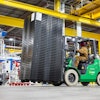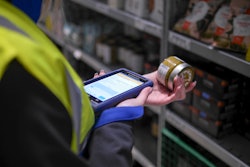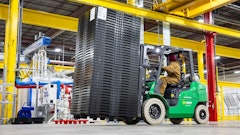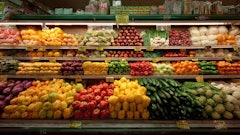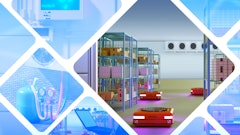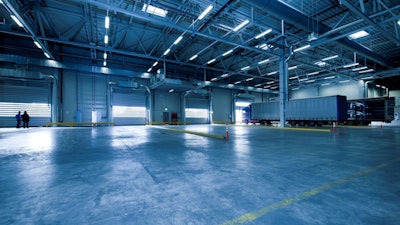
The food and beverage industry continues to flourish across the globe, and in 2020, UK revenue in this sector is expected to be £9,429 million. Food and beverage manufacturers are always dependent on the ever-changing needs of consumers. Currently, as consumers become more environmentally conscious and increasingly aware of what they put into their bodies, demand has increased for sustainably produced products and knowledge of where their food originates from.
Now more than ever, small and medium companies can produce their goods cost-effectively thanks to low production costs via contract manufacturers. Furthermore, these smaller businesses are flexible enough to easily adapt to consumer trends and quickly change their product offerings accordingly. And they can reach more customers via promotion on social media. But, these companies must have enhanced visibility into the full supply chain of each product and ensure they comply with high-standard traceability and labeling regulations.
Many food and beverage companies will start out by piecing together a number of different applications to run their operations, from accounting and order fulfilment to sales and marketing. Whilst this may suit their financial and marketing needs initially, this approach eventually limits business growth and makes it unsustainable. Therefore, it is imperative, as global competition intensifies, that such companies adopt an integrated business management system that will not only cover all their standard business needs, but one which will also meet their specific food and drink requirements.
Ripe for change
Food and beverage companies face production processing challenges that include managing shelf life, traceability through the entire supply chain, lot expiration, nutrient and allergen labeling and unit of measure complexities. However, with multiple systems and a lack of food and drink functionality, businesses often have limited accessibility to the different business and product information that is essential for productivity and development. Disparate systems and applications will not support a company’s growth, can heighten the risk of errors and may eventually hurt the overall customer experience.
In addition, smaller companies, in particular, may not have an enterprise resource planning (ERP) system that is vertical-specific and therefore capable of adapting to the needs of the food industry. They require a system that not only provides up-to-date reporting capabilities, but is also tailored to their needs. There are functional requirements, of course. But, it’s also key that a successful system will incorporate familiar language. Food and beverage manufacturers need their systems to be configured and optimized so that all partners in the supply chain – and the end consumers – can see allergen and ingredient information, as well as calculate waste costs and recipe management. Most ERP systems are not designed for vertical sectors. Even if they are specific to manufacturing, the language that is used is more suited to an industrial factory or an electronics setup. Food and drink manufacturers need a system that shows a product’s full recipe information, rather than a bill of materials. They don’t need CAD/CAM integration, but instead want to be able to calculate shrinkage costs, inspect ingredients and track sell and usage dates.
Without access to consolidated views and up-to-the minute reporting, companies may be held back from taking the next step. Previously, companies operating in a single location with a small number of staff could have survived without a fully automated system. But, for manufacturers looking to expand across numerous locations with an increased number of staff, the information needs grow rapidly. Without a comprehensive, holistic view across all business areas, companies won’t have real-time access to data such as inventory, sales, customers, production, quality and safety to make accurate and informed business decisions.
The use of multiple manual or spreadsheet processes may result in more reporting errors, and entering sales orders and invoice details manually may be time-consuming and costly. This can also result in incorrect or unreliable customer information, increased approval process time and inaccurate sales forecasting. Previous investments in old infrastructure may be inflexible, costly to maintain and prevent the business seizing new opportunities.
Companies may also be hesitant to invest in new technology due to the perceived time required to see a return on investment, so they may be cautious and want to avoid a significant cost outlay. However, this restraint may be holding the company back. It is vital that companies provide consumers with ingredient and nutritional information, maintain food quality throughout the entire process, control shelf life and can access data promptly in the event of a recall. A single, integrated cloud-based system can ensure food and drink companies remain successful for years to come.
Seamless expansion
Food and beverage companies must remain open-minded about switching to a cloud-based system. Adopting a business management solution can enable them to seamlessly expand, improve their profit margins and provide the tools for them to get the most out of their data. The use of a single, integrated system acts as a solution to the ‘application hairball’ that comes from outsourcing to many operators.
An integrated solution can provide a greater level of visibility and agility, real-time process self-adjustment and remote monitoring and management. It is fundamental to have a system that can ensure quick access to records, a reduction in risks by guaranteeing tight control of inventory traceability, and close management of recipes to ensure product quality, traceability and consistency. With shelf life control, shortages and wastages will be reduced and margins are therefore significantly improved.
A solution that allows all back-office management and roles to be collated in one place, means that employees don’t need to spend time searching for information from numerous places. For example, if sales orders or invoicing are paper-based, or financial consolidation involves time-consuming cross referencing across multiple databases, a cloud-system can assist and enhance productivity. Furthermore, where stock data, customer service and order placements are more responsive and up to date, it is more likely that consumers will be satisfied with their experience.
The importance of partnership
It is important for businesses to take the time to understand their individual needs and to work with a partner that can help migrate data and perform checks ahead of the system going live to ensure that the transition is as seamless as possible. A partner that helps provide a company with the ability to make decisions based on cross-functional information, will help it pull ahead of the global competition.
Greater development and growth await
For developing food and beverage companies that are struggling to manage back office systems and a variety of applications, a cloud-based solution can ensure they are more efficient and effective and that they can focus their efforts on development and growth. The need to invest in limited IT resources is diminished and businesses no longer need to consider the price of additional resources and technology as they grow rapidly. Simplifying what can easily become complicated processes will undoubtedly boost productivity – an asset which is vital to any food and beverage business. For small and mid-sized food and beverage manufacturers, it is time to assess whether their systems are operating effectively enough to sustain their continued advancement.

